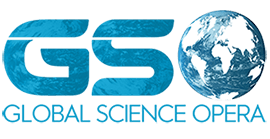Colombia
In April, the GSO-team visited Colombia. We had a wonderful week in beautiful Colombia, meeting so many great people, enthusiastic and engaged. Visiting several Universities and schools.

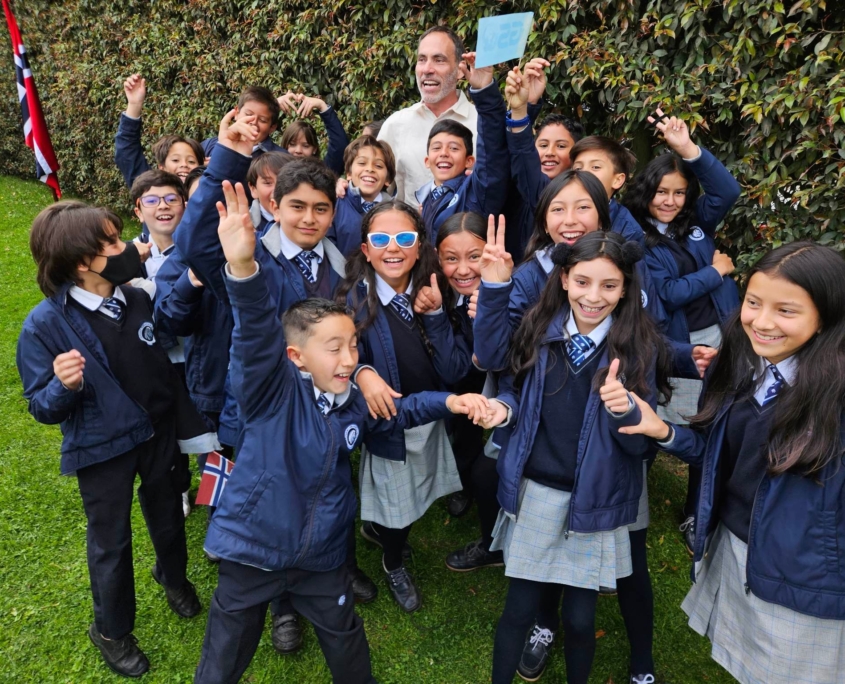
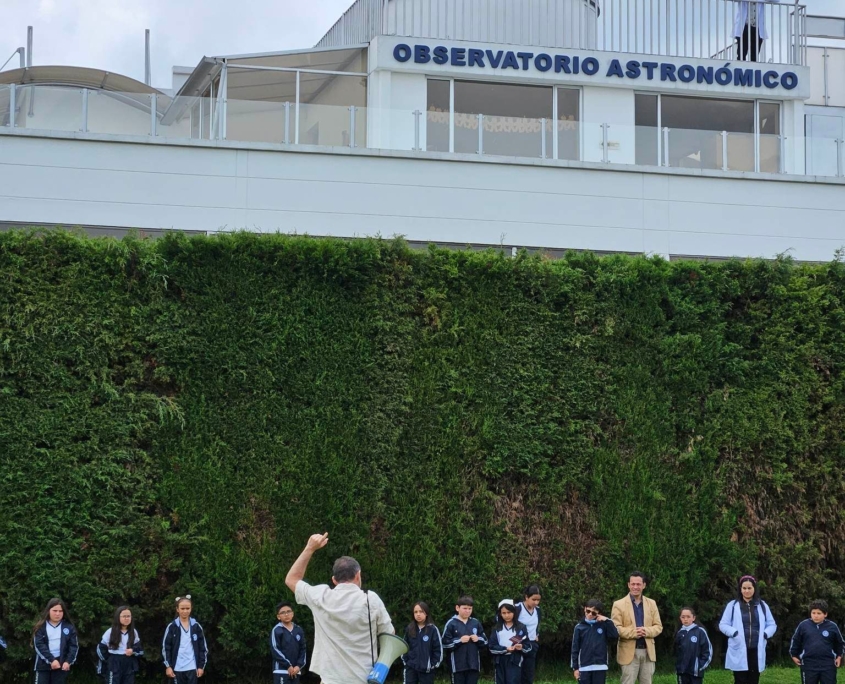
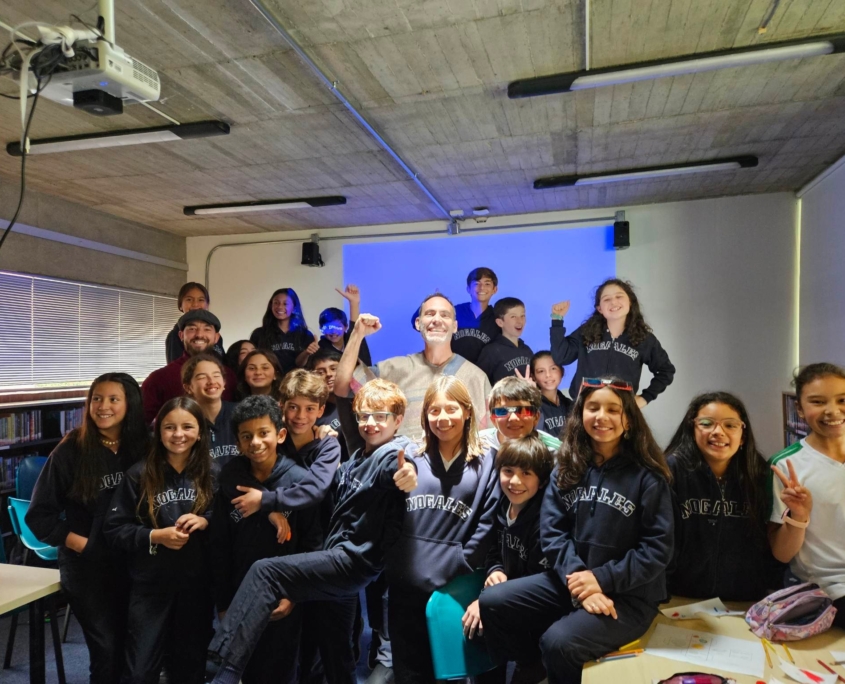

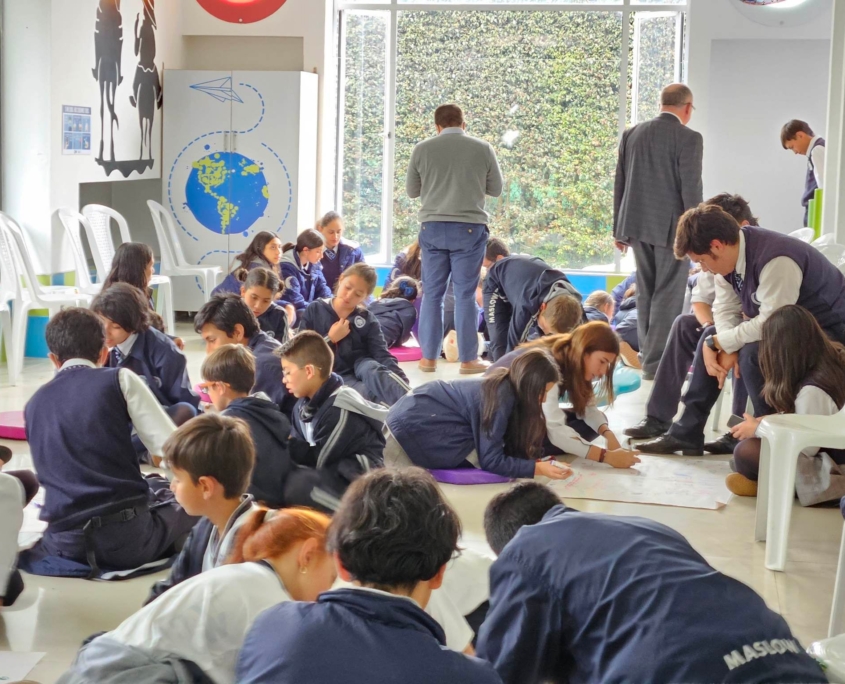
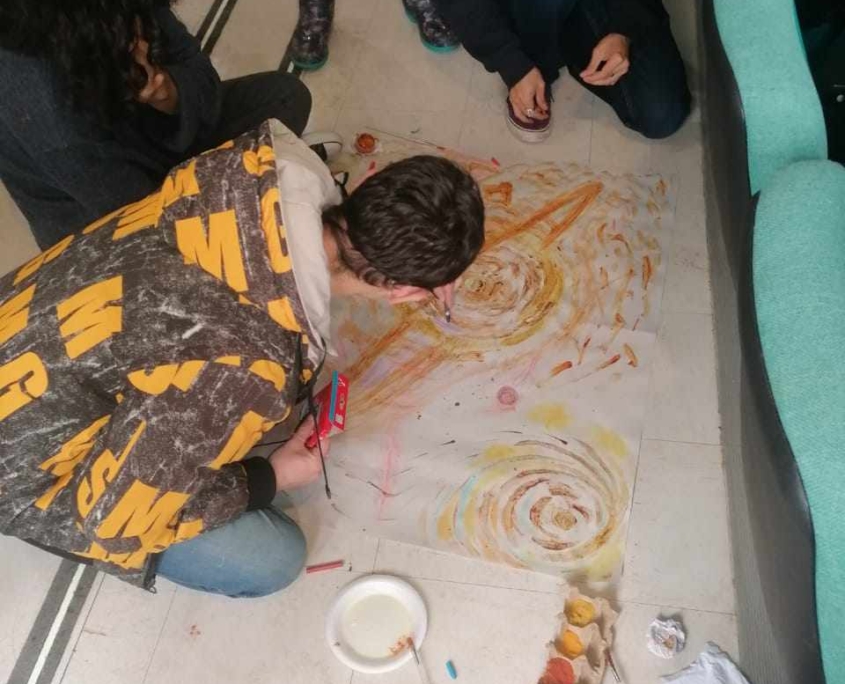
In April, the GSO-team visited Colombia. We had a wonderful week in beautiful Colombia, meeting so many great people, enthusiastic and engaged. Visiting several Universities and schools.







Unfold the Universe is the title not only of this year’s opera, but also the title of the Global Science Opera Choir song/rap. The music is written by Runa Godø Sæter (who recently delivered her MA about Rap Music Video in the GSO). The lyrics are written by Runa, her 6th grade students in collaboration with AI. Below you can see the text, and here you can find the music.
Lost in the vastness of space, we wonder our place
Floating through the unknown, searching for a trace
Of life beyond our world, a chance to explore
The secrets of the universe, what lies at the core
Stars shine like diamonds, planets spin like a top
Nebulas glow in the dark, never wanting to stop
We’re but tiny specks, in a universe so grand
But our curiosity drives us, to take a stand
Ref: Unfold the universe, let’s see what’s inside
From the stars in the sky, to the galaxies that hide
We’ll unravel the secrets, and explore the unknown
The universe is waiting, let’s make it our own.
Black holes that consume light, nothing can flee
We’re drawn to them like moths to flame, their mysteries we’ll see
Their power entices us, their pull we can’t ignore
Into the unknown we’ll venture, to explore even more
Our solar system with planets of every kind
Each one unique With secrets they’re designed
To reveal to those who seek, to uncover the truth
Of how we’re all connected, in this infinite cosmic youth
Ref: Unfold the universe, let’s see what’s inside
From the stars in the sky, to the galaxies that hide
We’ll unravel the secrets, and explore the unknown
The universe is waiting, let’s make it our own.
Apollo 11, a mission so bold
Neil Armstrong’s steps, a story forever told
Laika and Sputnik, the first steps in space
We’ve come so far since then, at an astonishing pace
Aliens that may exist, we wonder if they’re near
Or perhaps they’re far away, with technology we fear
But we’ll keep searching, our curiosity strong
To find the unknown, where we truly belong
Ref: Unfold the universe, let’s see what’s inside
From the stars in the sky, to the galaxies that hide
We’ll unravel the secrets, and explore the unknown
The universe is waiting, let’s make it our own.
Red giants and white dwarfs, a star’s final stage
Explosions that light up the sky, even at an old age
Dwarf planets and comets, meteors that fly by
The universe is always changing, never telling us why
The big bang that started it all, a moment so profound
A universe created, where mysteries are found
We’ll continue to explore, to the edge of time
Unraveling the universe, a journey divine.
Bridge:
Infinite possibilities, endless horizons to see
We’ll journey far and wide, through the galaxy and the sea
Discovering new worlds, unlocking secrets untold
The universe is our playground, a story waiting to unfold
Ref: Unfold the universe, let’s see what’s inside
From the stars in the sky, to the galaxies that hide
We’ll unravel the secrets, and explore the unknown
The universe is waiting, let’s make it our own.
Coda: Multiverses may exist, infinite possibilities
A place where time and space have different realities
Alternate versions of ourselves, living different lives
Is there another «I»? The question still survives
According to @MindtheGapEU, an Erasmus+ project where GSO is represented as one of the approaches, digital technology can increase participation in arts education by breaking down geographical and social barriers, enabling educators to connect with communities who rarely participate in cultural experiences. Check out @MindtheGapEU guidelines and recommendations for how create inclusive art practices, on the webpage .
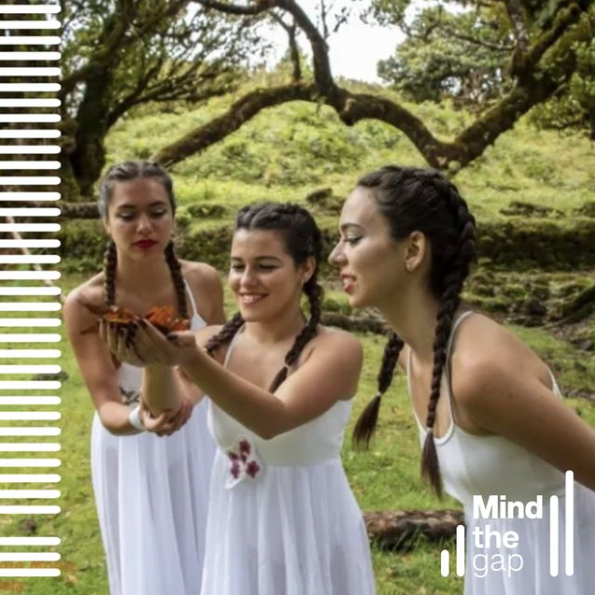
Here is the link to the final conference for the GSO4SCHOOL Erasmus project. It starts at ca. 1:24.
The 2023 Global Science Opera will be inspired by the data and images collected by the WEBB telescope.
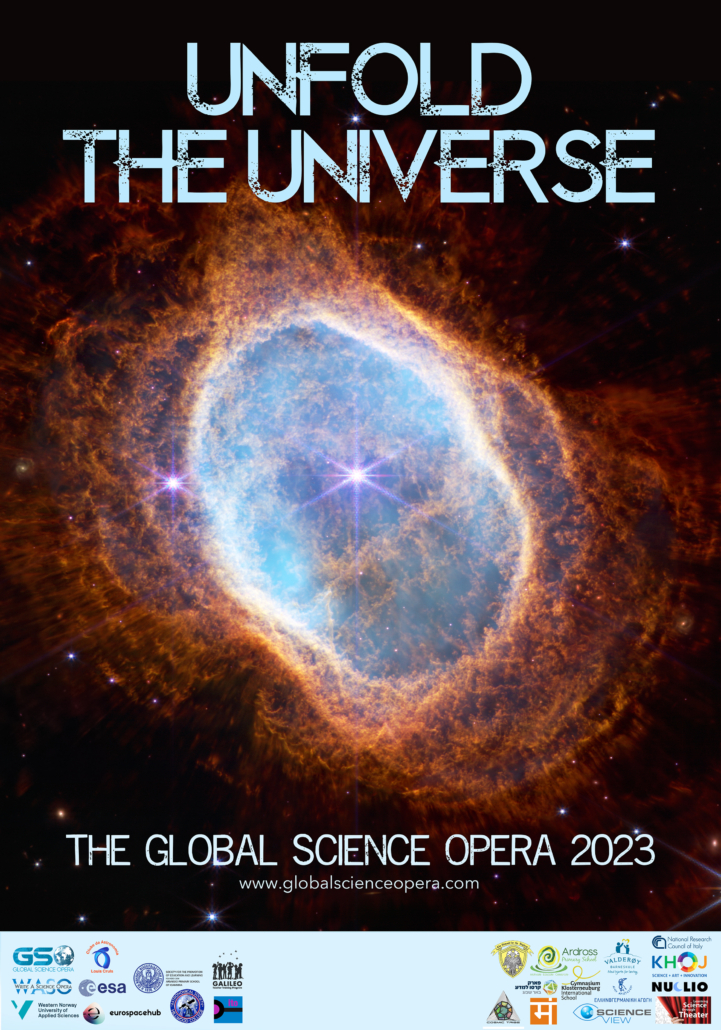
The bright star at the center of NGC 3132, while prominent when viewed by NASA’s Webb Telescope in near-infrared light, plays a supporting role in sculpting the surrounding nebula. A second star, barely visible at lower left along one of the bright star’s diffraction spikes, is the nebula’s source. It has ejected at least eight layers of gas and dust over thousands of years.
But the bright central star visible here has helped “stir” the pot, changing the shape of this planetary nebula’s highly intricate rings by creating turbulence. The pair of stars are locked in a tight orbit, which leads the dimmer star to spray ejected material in a range of directions as they orbit one another, resulting in these jagged rings.
Hundreds of straight, brightly-lit lines pierce through the rings of gas and dust. These “spotlights” emanate from the bright star and stream through holes in the nebula like sunlight through gaps in a cloud.
But not all of the starlight can escape. The density of the central region, set off in teal, is reflected by how transparent or opaque it is. Areas that are a deeper teal indicate that the gas and dust are denser – and light is unable to break free.
Data from Webb’s Near-Infrared Camera (NIRCam) were used to make this extremely detailed image. It is teeming with scientific information – and research will begin following its release.
This is not only a crisp image of a planetary nebula – it also shows us objects in the vast distances of space behind it. The transparent red sections of the planetary nebula – and all the areas outside it – are filled with distant galaxies.
Look for the bright angled line at the upper left. It is not starlight – it is a faraway galaxy seen edge-on. Distant spirals, of many shapes and colors, also dot the scene. Those that are farthest away – or very dusty – are small and red.
For a full array of Webb’s first images and spectra, including downloadable files, please visit: https:
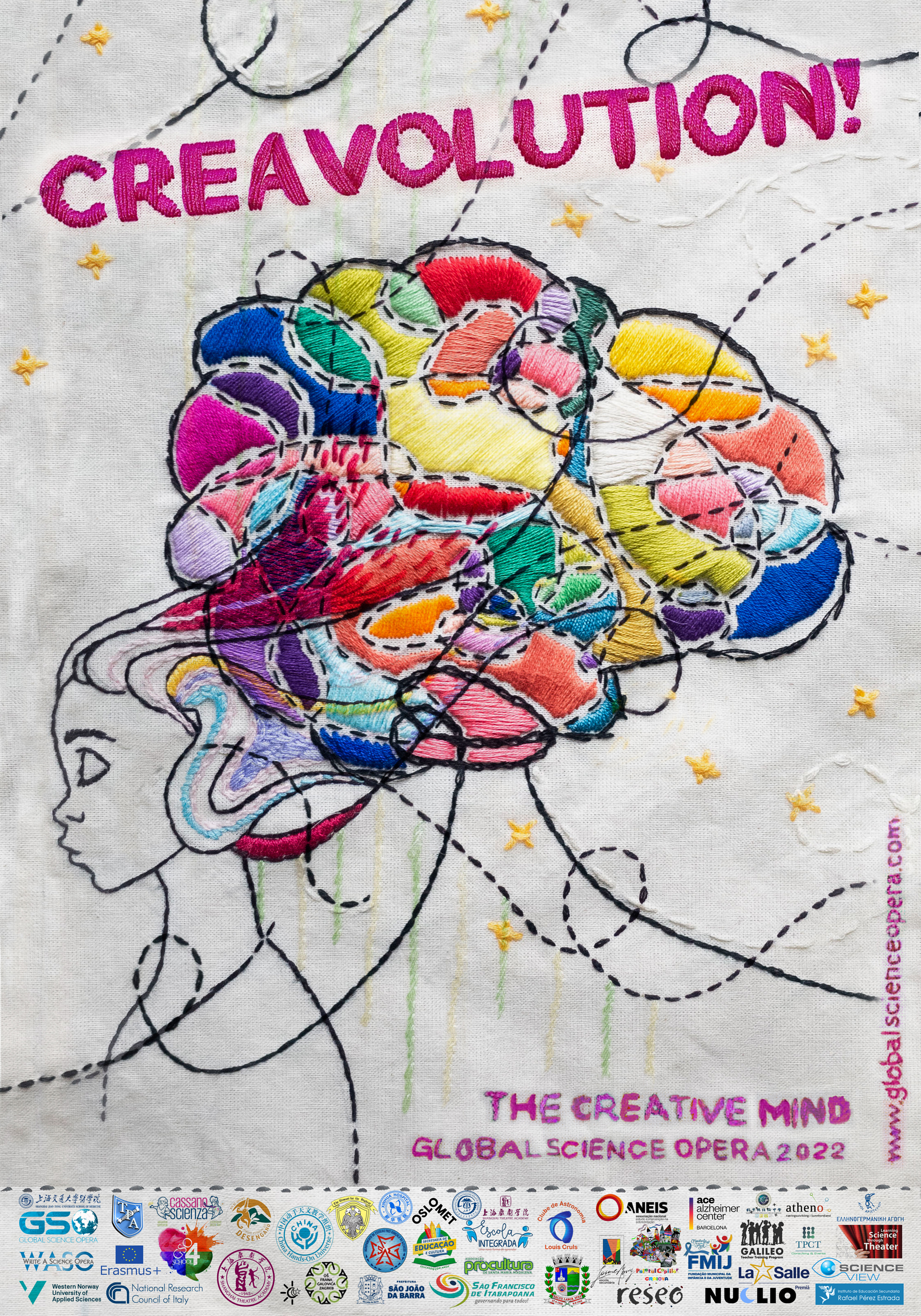
Where does creativity come from? Is it in the brain? In my body’s muscle-memory? Is it in my heart or my soul? How does my experience influence who I become as a person? Is creativity a special talent or something everyone has? How can I use my creativity actively? Where are our memories stored? And what happens when they start to fade?
In Creavolution, students from around 20 countries have collaborated with teachers, scientists and artists in creating and performing scenes all connected to the fascinating creative human mind. The Global Science Opera is an educational initiative, trans-disciplinary between the science- and the arts-field. It is a creative collaboration that defies national, cultural and linguistic borders.
Creavolution is a new made-up word giving associations to Creativity, evolution and revolution. It refers to how creativity is needed to evolve, and how the creative mind is a revolutionary powerful tool. Creavolution is the opposite of avolution: a total lack of motivation that makes it hard to get anything done, even simple, everyday tasks.
Join the Creavolution!
The 2022 Global Science Opera premieres on November 20th, at 2 pm cet on a computer near you.
https://vimeo.com/772489754
Brazil premiered its very first Science Opera on June 30th, 2022. Students from three different municipalities participated, having created and performing stories connected to time: past, present and future. You can the opera here.
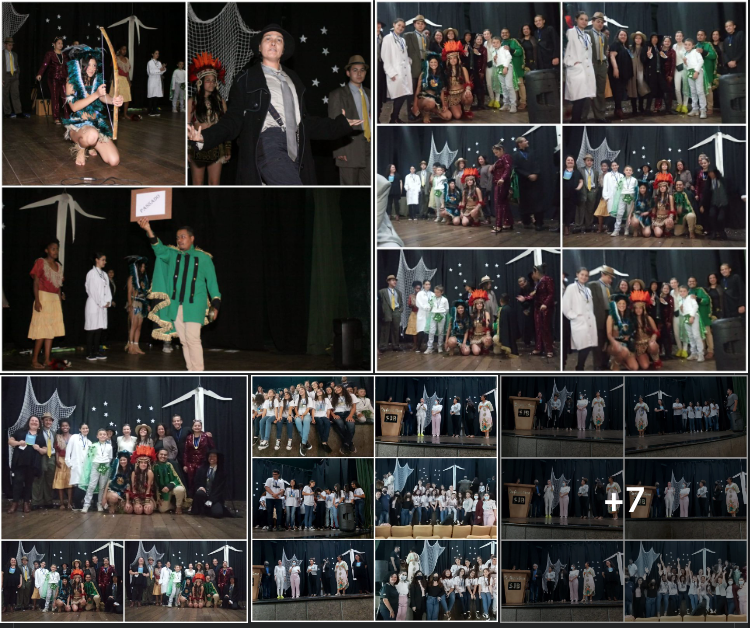
In the last week of June, hundreds of teachers, students, administrators and artists in Brazil attended workshops, presentations or meet-and-greet-sessions with the GSO coordinator. The three municipalities Santa Maria Madalena, Sao Francisco de Itabapoana and Sao Joao de Barra have invested large in education for their students by training their teachers in the GSO methodology and sustainable theatre-production. The week culminated with the very first Brazil Science Opera.

Here are just a few photos from the ten days.

Keep the dates:
March 31st 4 pm cet: Petros Stergioploulos – Music-workshop on sonification and leitmotif. Please find link in Creavolution-booklet for link to his first session. This second one builds on the first.
April 22nd, 2 pm cet: Zeke Locke (USA) – Rehearsal Global Science Opera choir
May 20th at 2 pm cet: Valentina Tudisca (Italy)/ Paraskevi Tzouveli from the National Technical University of Athens (NTUA) and Maria Boubouka from the 1st Experimental School of Athens (Greece) – Open Educational Resources (and where to find them)
For recordings of previous online sessions, please find links in the Creavolution booklet. There you will also find the link to the coming sessions.
This site uses cookies. By continuing to browse the site, you are agreeing to our use of cookies.
OKLearn moreWe may request cookies to be set on your device. We use cookies to let us know when you visit our websites, how you interact with us, to enrich your user experience, and to customize your relationship with our website.
Click on the different category headings to find out more. You can also change some of your preferences. Note that blocking some types of cookies may impact your experience on our websites and the services we are able to offer.
These cookies are strictly necessary to provide you with services available through our website and to use some of its features.
Because these cookies are strictly necessary to deliver the website, refuseing them will have impact how our site functions. You always can block or delete cookies by changing your browser settings and force blocking all cookies on this website. But this will always prompt you to accept/refuse cookies when revisiting our site.
We fully respect if you want to refuse cookies but to avoid asking you again and again kindly allow us to store a cookie for that. You are free to opt out any time or opt in for other cookies to get a better experience. If you refuse cookies we will remove all set cookies in our domain.
We provide you with a list of stored cookies on your computer in our domain so you can check what we stored. Due to security reasons we are not able to show or modify cookies from other domains. You can check these in your browser security settings.
These cookies collect information that is used either in aggregate form to help us understand how our website is being used or how effective our marketing campaigns are, or to help us customize our website and application for you in order to enhance your experience.
If you do not want that we track your visit to our site you can disable tracking in your browser here:
We also use different external services like Google Webfonts, Google Maps, and external Video providers. Since these providers may collect personal data like your IP address we allow you to block them here. Please be aware that this might heavily reduce the functionality and appearance of our site. Changes will take effect once you reload the page.
Google Webfont Settings:
Google Map Settings:
Google reCaptcha Settings:
Vimeo and Youtube video embeds:
The following cookies are also needed - You can choose if you want to allow them:
You can read about our cookies and privacy settings in detail on our Privacy Policy Page.
Privacy Policy